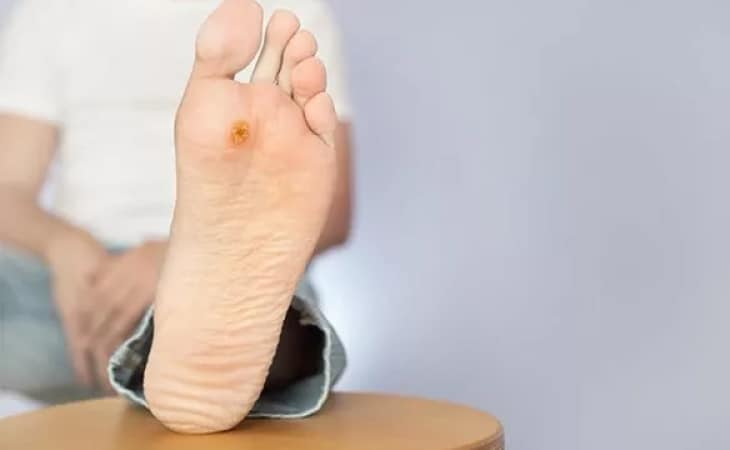
Diabetic Foot
The problem affects about 60 to 70 percent of people with diabetes. Foot problems are a big risk. Like all diabetic people, you should monitor your feet. If you don’t, the consequences can be severe, including amputation, or worse. Minor injuries become major emergencies before you know it. With a diabetic foot, a wound as small as a blister from wearing a shoe that’s too tight can cause a lot of damage. Diabetes decreases your blood flow, so your injuries are slow to heal. When your wound is not healing, it’s at risk for infection. As a diabetic, your infections spread quickly.
If you have diabetes, you should inspect your feet every day. Look for puncture wounds, bruises, pressure areas, redness, warmth, blisters, ulcers, scratches, cuts and nail problems. Get someone to help you, or use a mirror. Feel each foot for swelling. Examine between your toes. Check six major locations on the bottom of each foot: The tip of the big toe, base of the little toes, base of the middle toes, heel, outside edge of the foot and across the ball of the foot. Check for sensation in each foot. If you find any injury — no matter how slight — don’t try to treat it yourself. Go to a doctor right away.Here's some basic advice for taking care of your feet:
Here's some basic advice for taking care of your feet:
Wash your feet every day with mild soap and warm water. Test the water temperature with your hand first. Don’t soak your feet. When drying them, pat each foot with a towel and be careful between your toes.
Use quality lotion to keep the skin of your feet soft and moist – but don’t put any lotion between your toes.
Trim your toe nails straight across. Avoid cutting the corners. Use a nail file or emery board. If you find an ingrown toenail, see your doctor.
Don’t use antiseptic solutions, drugstore medications, heating pads or sharp instruments on your feet. Don’t put your feet on radiators or in front of the fireplace.
Always keep your feet warm. Wear loose socks to bed. Don’t get your feet wet in snow or rain. Wear warm socks and shoes in winter.
Don’t smoke or sit cross-legged. Both decrease blood supply to your feet.
Never walk barefoot or in sandals or thongs.
Choose and wear your shoes carefully. Buy new shoes late in the day when your feet are larger. Buy shoes that are comfortable without a “breaking in” period. Check how your shoe fits in width, length, back, bottom of heel and sole. Avoid pointed-toe styles and high heels. Try to get shoes made with leather upper material and deep toe boxes. Wear new shoes for only two hours or less at a time. Don’t wear the same pair everyday. Inspect the inside of each shoe before putting it on. Don’t lace your shoes too tightly or loosely.
Choose socks and stockings carefully. Wear clean, dry socks every day. Avoid socks with holes or wrinkles. Thin cotton socks are more absorbent for summer wear. Square-toes socks will not squeeze your toes. Avoid stockings with elastic tops
Foot deformities
When your feet lose their feeling, they are at risk for becoming deformed. One way this happens is through ulcers. Open sores may become infected. Another way is the bone condition Charcot (pronounced “sharko”) foot. This is one of the most serious foot problems you can face. It warps the shape of your foot when your bones fracture and disintegrate, and yet you continue to walk on it because it doesn’t hurt.
A doctor may treat your diabetic foot ulcers and early phases of Charcot fractures with a total contact cast. The shape of your foot molds the cast. It lets your ulcer heal by distributing weight and relieving pressure. If you have Charcot foot, the cast controls your foot’s movement and supports its contours if you don’t put any weight on it. To use a total contact cast, you need good blood flow in your foot. Your doctor monitors it carefully. The cast is changed every week or two until your foot heals.
A custom-walking boot is an another way to treat your Charcot foot. It supports the foot until all the swelling goes down, which can take as long as a year. You should keep from putting your weight on the Charcot foot. Surgery is considered if your deformity is too severe for a brace or shoe.
Quick Contacts
Please feel free to contact us for any medical inquiry
- Emergency call : +91 94274 18181
- Email : contact@trishahospital.com
- Location: Trisha multispeciality hospital, Ahmedabad



